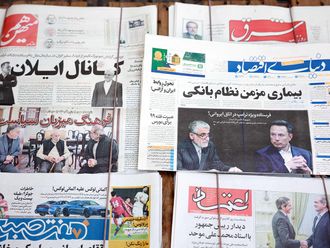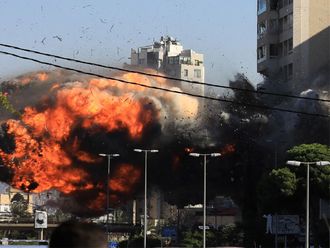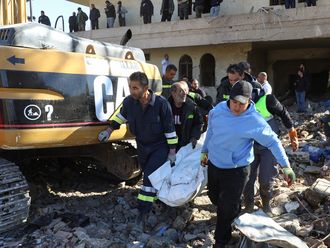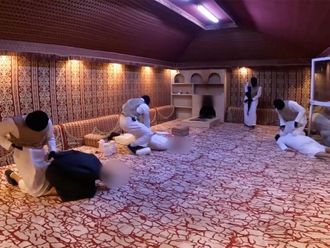Cairo: Cartoonist Ali Farzat’s hand glides over the paper, once more creating the images of defiance he says have helped mobilise Syrians to revolt against President Bashar Al Assad.
Just over 12 months ago, the Syrian was kidnapped, beaten and burned in an attack he blamed on Syrian security police trying to silence him and stop him drawing the caricatures that protesters have waved aloft as they took to the streets.
His hands were smashed and he suffered facial burns, temporary loss of his eyesight and multiple broken bones.
One of Syria’s most famous artists, Farzat earned recognition in the Arab world and beyond for stinging cartoons of Arab leaders such as Libya’s Muammar Gaddafi and Iraq’s Saddam Hussain and finally, Al Assad.
Farzat, 60, escaped to Kuwait to recuperate. Now in Egypt, which overthrew its own president in an 18 day uprising in 2011, Farzat told Reuters he was determined to continue his work and support those still seeking to topple Al Assad 19 months after they began.
“Everyday the revolution inches a step forward. I am very optimistic. Do you see anyone turning back?” he said, proudly gesturing with his hands to show they were back in action.
“Fear has been defeated in Syria when the people marched 19 months ago against tyranny.
“I began to directly draw people in power, including Al Assad and his government officials, to break the barrier of fear, that chronic fear that Syrians suffered from for 50 years.”
One of his first cartoons portraying Al Assad — long a taboo in Syria — showed the president reluctantly ripping a page off a calendar on Thursday, knowing that Friday would bring another wave of popular protests to the streets of Syria.
In another, Al Assad tries to hitch a lift with Gaddafi, and a third shows Al Assad beside a large armchair, unable to sit down because the springs have broken.
Demonstrators carried banners of his work as new-found expressions of resistance. Farzat, who works for Kuwait’s Al Watan newspaper, has been denied entry into Iraq, Libya, Jordan and Oman because of his work.
TANK SKETCH
Farzat said Al Assad initially tried to get him and other Syrian artists on his side, promising reforms to all, but setting up a system of patronage to win the loyalty of some and exclude those who resisted him.
“On a personal level we found Al Assad contradictory. One day, we would speak and agree on a specific issue. The next day we would find out he had changed his mind,” said Farzat, recalling the day he decided to take on Al Assad in his work.
“Satirising a dictator empowers the masses. It strengthens them and undermines their enemy,” he said.
Sitting on his desk in a building overlooking Tahrir Square, the heart of the uprising in Egypt, Farzat sketches on white paper. A tiny bird emerges, chipping and breaking off the head of an axe that sticks out of a Syrian military fatigues, a symbol of Al Assad’s power.
He quickly draws a tank unable to roll over a flower, blocking the tank from moving forward. These sketches and others will be showcased in his independent magazine Al Domari, meaning the Lamp Lighter, which he plans to relaunch in Egypt.
The magazine, which was founded in 2000 during a brief period of media freedom, was forced to shut down by Al Assad’s government in 2003.
“The magazine’s purpose is gradually remove the darkness that befell our Arab world,” said Farzat.
He hopes to form a symposium with young artists and cartoonists in Egypt to support the art movement that grew out of Egypt’s uprising.
“These cartoons stem from the sorrows of people. They give them courage and determination,” said Farzat.












